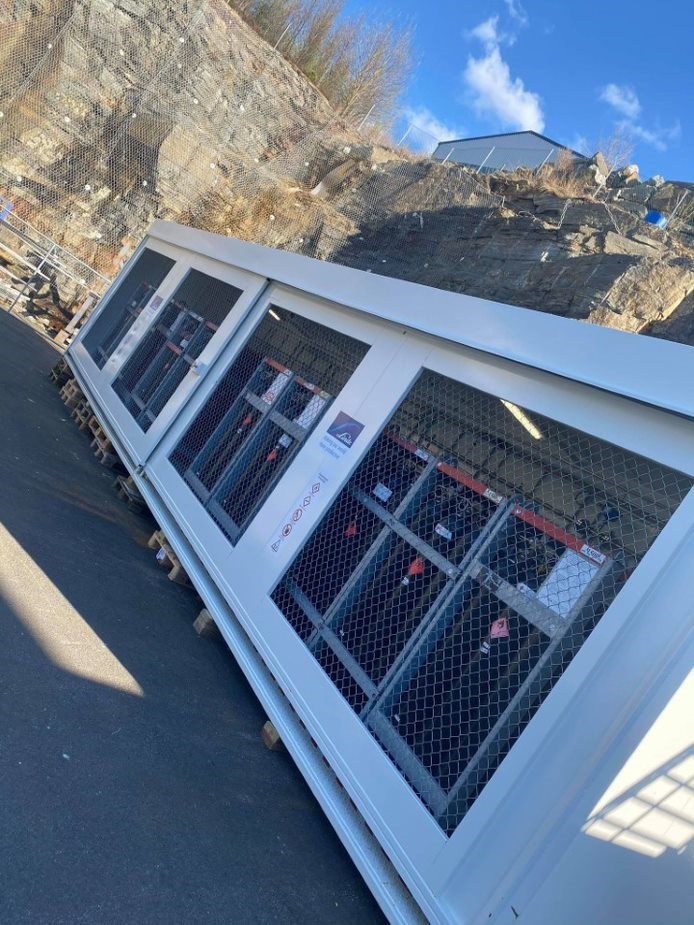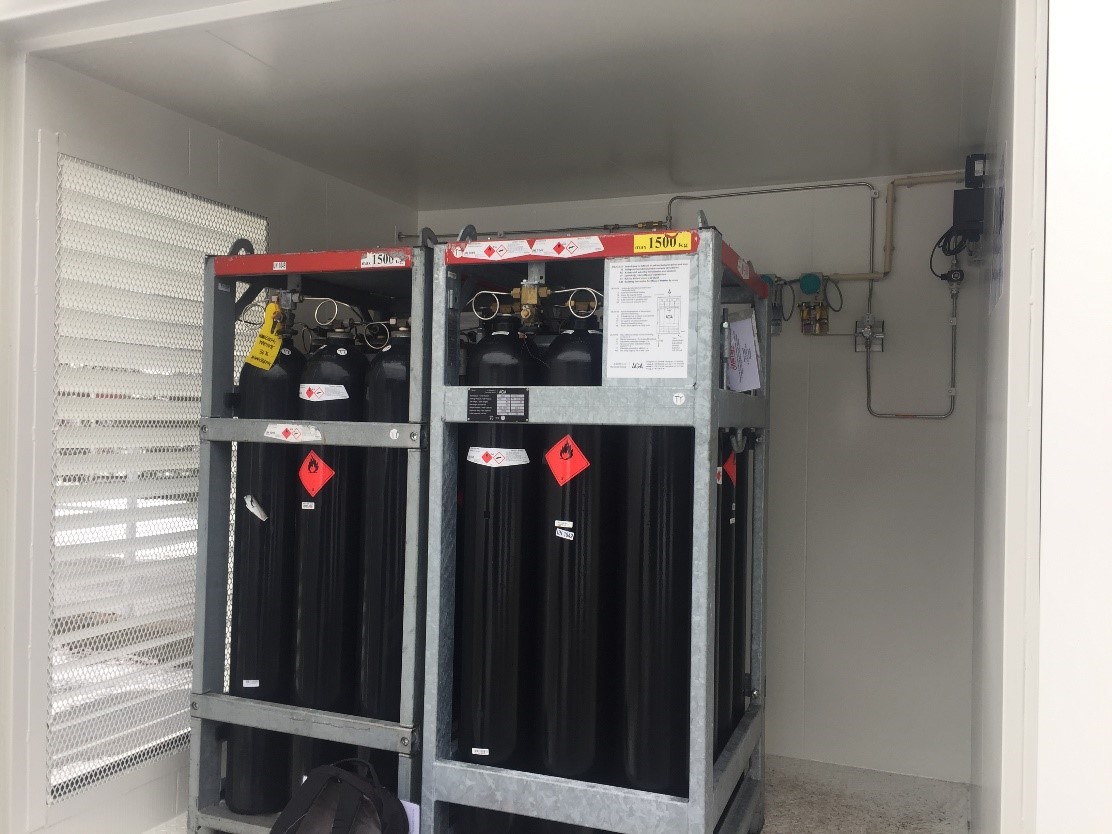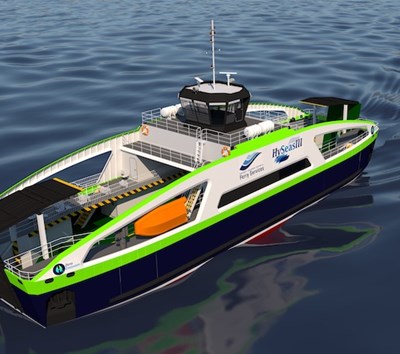Operations are underway at the Ågotnes site in Norway to build and test the power-train components that would be required to operate a fuel cell powered ferry, known as the String Test. Today saw the arrival of the fuel that will power this project: hydrogen.
Hydrogen has several characteristics that make it a strong candidate to power a wide range of future ships. Firstly, hydrogen has the potential to deliver zero-emission propulsion on a tank to wake basis, and could deliver true zero-emission propulsion on a well to wake basis if green hydrogen is used. The extraction of energy from hydrogen is more efficient when used to power a fuel cell system, such as the Ballard HD-100 fuel cells have been installed for this project. Additionally, hydrogen is light, non-toxic and can be produced using electrolysis (requiring only electricity and water).
One of the main challenges with hydrogen, however, is storage. Due to the relatively low density of hydrogen, more volume is required than conventional fuels to store the equivalent energy content. Also, the hydrogen molecule is the smallest known molecule, and is prone to leakage if not stored and handled properly.
Hydrogen has a flashpoint of -231 ˚C, this is notably lower than diesel at 60 ˚C and methane (the main component of LNG) at -188 ˚C [1]. Additionally, hydrogen has a larger flammability range in air (4 to 75%) compared to diesel (0.6 to 5.5%) and methane (5.3 to 15%) [1]. Therefore, the risk of explosion for hydrogen would probably be higher than conventionally used fuels. However, the lightness of hydrogen means that it typically dissipates quickly into the atmosphere during leaks. Furthermore, hydrogen has a high octane number (>130), meaning that it can be compressed more than other fuels before ignition. It also has a high auto ignition temperature (585 ˚C) [1], hence the chance of explosion without a spark would be low. A breakdown of these criteria is shown in Table 1.
Table 1: Comparison of hydrogen characteristics to existing fuels. Data from Mazloomi and Gomes [1]
|
Fuel type |
Flashpoint (˚C) |
Flammability range (%) |
Octane number |
Auto ignition temperature (˚C) |
|
Hydrogen |
-231 |
4-75 |
>130 |
585 |
|
Methane |
-188 |
5.3-15 |
125 |
540 |
|
Diesel |
62 |
0.6-5.5 |
30 |
210 |
To manage these safety concerns for the String Test, the hydrogen has been stored in a 40ft container (shown in Figure 2), this is outdoors and separate from the other components. This would enable the quick ventilation of any leaks, and if explosion is likely, then it would be away from people and other equipment. Additionally, a comprehensive safety system has been included with the capacity to quickly detect any leaks and react accordingly.
Furthermore, to reduce the volume required for storage, hydrogen is being stored in pressurised bottles. These reach pressures up to 200 bar and weigh approximately 150 kg (to store 9kg of hydrogen). The site has capacity for over 100 kg of hydrogen that can be delivered to the fuel cell system at around 15 bar.

Figure 2: Hydrogen storage container at the Ågotnes site
[1] K. Mazloomi and C. Gomes, "Hydrogen as an energy carrier: prospects and challenges," Renewable and Sustainable Energy Reviews, vol. 16, no. 5, pp. 3024-3033, 2012.





